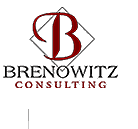


|
Issue # 1 - Effective Influencing
by Randi Brenowitz Issue # 1 Brenowitz Consulting is pleased to bring you this inaugural issue of Tools for Teams, our bi-monthly electronic newsletter. Each issue will explore one of the central themes of today's challenging business environment. We will present our current thinking, relevant readings, book reviews, and other resources--all designed to give you practical tools to improve productivity through teamwork and collaboration Feel free to forward this newsletter to your friends and colleagues. To subscribe, send e-mail newsletter@brenowitzconsulting.com with "subscribe" in the subject line. To unsubscribe, email newsletter@brenowitzconsulting.com with “unsubscribe” in the subject line. You may quote anything herein, with the following attribution: “Reprinted from Tools for Teams, © Brenowitz Consulting (www.brenowitzconsulting.com).” We welcome your comments and suggestions for future topics. Just email us at info@brenowitzconsulting.com. * * * *
*
In this era of cross-functional teams, joint ventures, partnerships, and alliances, masters of influence exert far greater power than might be expected from their official title or position in the hierarchy. With that in mind, I eagerly started reading Exercising Influence by B. Kim Barnes (Barnes & Conti Associates, 2000). I was not disappointed. Barnes reminds us that a good set of influence skills can lead to:
1. Results: What are you hoping to accomplish
through influencing this person?
After a brief discussion of the first three elements, several chapters explore the specific influence behaviors in greater depth. We are introduced to the concepts of expressive influence (sending your ideas and energy out to others) and receptive influence (inviting others to contribute ideas, information, and action). Expressive behaviors are suggesting, expressing needs, offering reasons, referring to shared values or goals, encouraging, envisioning, offering incentive, and describing consequences. When used effectively, expressive influence leads people to action. It allows you to communicate your enthusiasm for an idea and exhort others to share it. Expressive influence is best used when you want people to know what you need; you have a solution to a problem that has already been expressed; you want to generate enthusiasm and energy; you want to bring disagreements out into the open; or you want to move toward completing an agreement or getting a commitment. Receptive behaviors are asking open-ended questions; drawing others out; checking for understanding, testing implications clarifying issues, posing challenging questions; disclosing information about yourself; and identifying with the other person. Receptive influence indicates respect for the ideas and concerns of others. It can guide you and others to an agreement or solution that satisfies all. You should consider using receptive behaviors, says Barnes, when you need important information; you want to get the other person committed to a decision; you need the other person to take an action that you cannot take yourself; or the other person has indicated that he or she does not feel listened to. A balanced combination of expressive and receptive behaviors can be a powerful tool to help you achieve your goals you have in any influencing situation. The summary chart on page 30 and the guidelines for choosing each of these behaviors on pages 102 & 103 are worth the price of the book. I strongly suggest keeping them close at hand. The remainder of the book outlines how to develop an influencing plan that focuses on Barnes’s four key elements with guidelines for choosing the right behavior in various circumstances. Appendix C provides a helpful step-by-step worksheet. It is a valuable tool that, if used properly, can enable people to use the skills they already have, practice some new ones, and become better influencers and team leaders and members. Additional Resources on this topic:
|
||||||||
|
||||||||